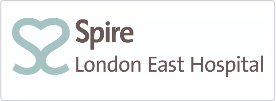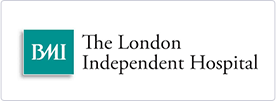
Gallstones occur when bile, which is normally fluid, forms stones.
Gallstones commonly contain lumps of cholesterol-like (fatty) material that has solidified and hardened. Sometimes bile pigments or calcium deposits form gallstones.
Sometimes just a few small stones are formed; sometimes a great many. Occasionally, just one large stone is formed.
Gallstones become more common with increasing age. The risk of forming gallstones increases with pregnancy, obesity, rapid weight loss, having a close relative with gallstones, diabetes and if you take certain medicines such as the contraceptive pill.
No sypmtoms: Commonly gallstones cause no symptoms.
They are often found when the abdomen is scanned or X-rayed looking for the cause of abdominal symptoms. If gallstones are found this does not always mean that they are the cause of symptoms. They may be, but they are sometimes blamed for causing symptoms which are due to other causes.
Possible symptoms: About one out of three people with gallstones develop symptoms or problems.
Symptoms include:
Biliary colic – This is a severe pain in the upper abdomen. The pain is usually worst to the right-hand side, just below the ribs. It is caused by a stone that gets stuck in the cystic duct. This is the small tube that takes bile from the gallbladder to the bile duct. The gallbladder then squeezes hard to dislodge the stone, and this causes pain. The pain eases and goes if the gallstone is pushed out into the bile duct (and then usually out into the gut), or if it falls back into the gallbladder.
Pain from biliary colic can last just a few minutes but, more commonly, lasts several hours. A severe pain may only happen once in your lifetime, or it may flare up from time to time. Sometimes less severe but niggly pains occur now and then, particularly after a fatty meal when the gallbladder contracts most.
Inflammation of the gallbladder – This is called cholecystitis. This can lead to infection in the gallbladder. Symptoms usually develop quickly and include abdominal pain, fever, and being generally unwell. You will normally have to be admitted to hospital and have your gallbladder removed soon.
Jaundice – This is an uncommon complication of gallstones. It occurs if a gallstone comes out of the gallbladder, but gets stuck in the bile duct. Bile then cannot pass into the gut, and so seeps into the bloodstream. This causes you to go yellow (jaundiced). The stone may eventually be passed into the gut. However, it is common to either need an ERCP (camera test) or an operation to remove a gallstone which has become stuck in the bile duct. (Note: there are many other causes of jaundice apart from gallstones.)
Pancreatitis – This is an inflammation of the pancreas. The pancreatic duct and bile duct join together just before opening into the duodenum. If a gallstone becomes stuck here it can cause pancreatitis which is a painful and serious condition.
Other complications occasionally occur such as severe infection of the bile duct (cholangitis) and other uncommon gut problems.
Ultra-Sound (U/S) scan and blood tests are the most common investigations done. However, other tests are sometimes needed to rule out other conditions such as stomach ulcers, irritable bowel syndrome and tumours.
No treatment is needed in most cases: It is often best to leave gallstones alone if they cause few or no symptoms.
Medication: Ursodeoxycholic acid may sometimes dissolve small stones. However, this may take years of treatment, is not usually successful, and therefore not commonly used.
Surgery: Once gallstones start giving symptoms, surgery is the best treatment. An operation to remove the gallbladder is the usual treatment.
Different techniques to remove the gallbladder may be recommended depending on its site, size, and other factors.
Keyhole surgery is now the most common way to remove a gallbladder, called laparoscopic cholecystectomy. It is called keyhole surgery as only small cuts are needed in the abdomen with small scars remaining afterwards. The operation is done with the aid of a special telescope that is pushed into the abdomen through one small cut. This allows the surgeon to see the gallbladder. Instruments pushed through another small cut are used to cut out and remove the gallbladder. Keyhole surgery is not suitable for all people.
Some people with gallstones need a traditional operation to remove the gallbladder. This is called cholecystectomy. In this operation a larger cut is needed to get at the gallbladder.
Other surgical procedures like ERCP may be needed if a stone gets stuck in the bile duct.
You do not need a gallbladder to digest food. Bile still flows from the liver to the gut once the gallbladder is removed. However, there is no longer any storage area for bile between meals. The flow of bile is therefore constant, without the surges of bile that occur from a gallbladder when you eat a meal.
You can usually eat a normal diet without any problems after your gallbladder is removed. However, up to half of people who have had their gallbladder removed have some mild abdominal pain or bloating from time to time. This may be more noticeable after eating a fatty meal. Some people notice an increase in the frequency of passing stools (motions or faeces) after their gallbladder is removed. This is like mild diarrhoea. It can be treated by antidiarrhoeal medication if it becomes troublesome.
Watch our valued client Isobel Grayson talking about her experience having Laparoscopic Sleeve Gastrectomy by Mr Sanjay Agrawal at The London Obesity Group clinic in London.
 Before
Before After
AfterWatch our valued client Jane Round taking about her experience having Laparoscopic Sleeve Gastrectomy by Mr Sanjay Agrawal at The London Obesity Group clinic in London.
 Before
Before After
AfterPlease provide us with a few information or call us on 07876 618424 and a member of our friendly team will be happy to help with your request.
27 Harley Street, London W1G 9QP
Stepney Green, London E1 4NL
Ilford, Essex IG4 5PZ
Buckhurst Hill, Essex IG9 5HX
Harlow, Hertfordshire CM21 0HH
Brentwood Essex CM15 8EH




